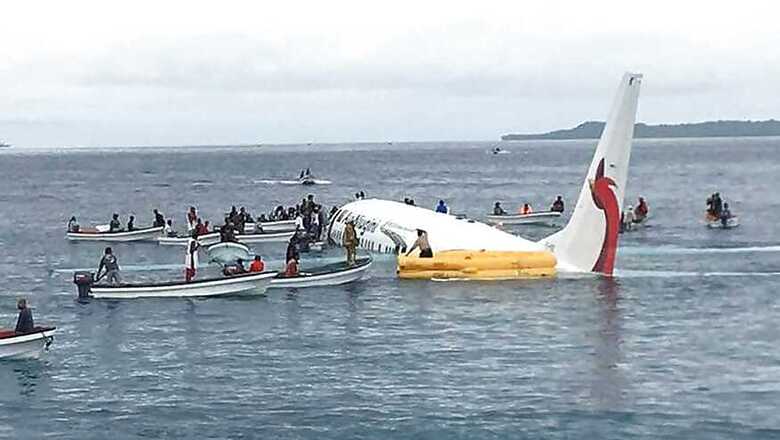
views
Even though it’s expensive, Airways is undoubtedly the most preferred mode of transportation for people travelling long distances. It’s comfortable, time saving and exciting. However, there’s always an underlying fear of a plane crash, something which is deeply embedded in deep of our sub-conscious mind (going too philosophical?). Simply put, since you are 35000 ft above the ground, in case of a crash, the chances of survival are zero. On the contrary, no matter how bad an accident is on the road, one doesn’t fear fatality.
The recent spree of two fatal air crashes involving the Boeing 737 Max 8 aircrafts within a span of 5 months killing more than 350 people has once again elevated that fear in the minds of the people – Are we safe to fly? Many studies have proved that this fear is purely psychological and the chances of dying in a plane crash are less than walking in a park. The only difference is, a plane crash results in a headline-making event or a movie, constantly hammering the fear in one’s mind.
Is Travelling in the Air Really That Dangerous?
Is travelling via airways really that dangerous or is it just a perception? In 2018, a total of 561 people died worldwide in plane crashes and in 2019, the Ethiopian Airlines crash is already making a lot of news. However, if you cumulate the number of flights and passengers that fly every year, 2018 (which is considered to be the worst year in aviation safety) resulted in only 1 death per 3 million flights. Your chance of dying while walking in a park is 1 in 1000. In fact, the chances of dying in a road accident, is way more than the air crash itself.
If you take the average (not just 2018), your chances of dying in a plane crash are 1 in 5 million. According to a report from the U.S. National Transportation Safety Board, a data compiled between 1983 and 2000 of all the plane crashes have yielded a result that 95.7 percent people survived a crash. But what we actually concentrate on is a fatal crash and it’s highly likely that chance of surviving a fatal crash is negligible. But you have to take into account that fatal crashes are a rarest of the rare occurrence in the aviation industry.
How to boost your survival chances?
A modern day airliner is built to withstand the harshest of the conditions. The engineering work that goes behind an aircraft is mind-boggling and the companies who manufacture commercial airplanes (Boeing and Airbus produce more than 99% of the commercial aircrafts combined) have strict checks and balances in action. More than comfort and convenience features, an aircraft is full of safety features.
Remember the air crew member reminding you of wearing a seat-belt, opening the window flap, closing the tables, not smoking inside the plane and giving you safety instructions? Those are all part of procedures to ensure your safety while flying. So first things first, listen to the crew and follow the instructions.
Secondly, a plane can’t just freefall in case of a failure as shown in movies. A plane is designed with a lot of physics in mind and can glide back to the ground even after the engine and electronics failure. However, if you still want to increase your chances of survival, a study by Popular Mechanics showed that sitting a bit towards the back of the plane will increase your chances of survival in case of a crash landing by almost 30%.
Popular Mechanics looked at every plane crash in the U.S. over more than 20 years and found that people sitting in the front are not very safe as compared to those in the back. Also, the crash is most likely to happen while a take-off or landing. It’s always advisable not to sleep during those times and brace for impact to increase your chances of survival.



















Comments
0 comment